#eurasian carp
Explore tagged Tumblr posts
Text
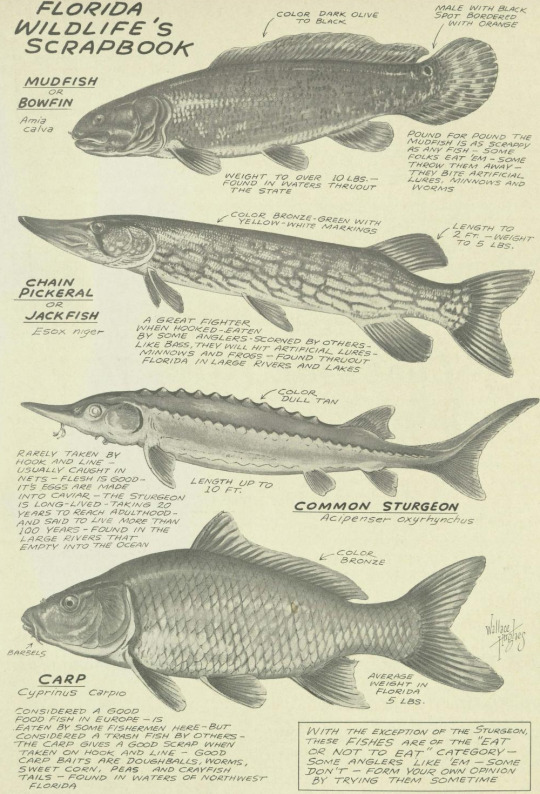
Florida Wildlife; vol. 11, no. 11. April, 1958. Illustration by Wallace Hughes.
Internet Archive
#marine life#fish#bowfin#pike#chain pickerel#sturgeon#atlantic sturgeon#carp#eurasian carp#Wallace Hughes
252 notes
·
View notes
Note
may I receive a humble carp?
Carp, short for carpohydrates

You get an European Carp
Cyprinus carpio
99 notes
·
View notes
Photo

いつもの場所に鯉が5匹かたまっていた(5月1日)
2 notes
·
View notes
Text
Catch Success!

Species: Eurasian Carp (Cyprinus carpio)
Length: 1'4" (0.4 m)
Weight: 4.4 lb (2 kg)
If carp could speak they would all have French accents
196K notes
·
View notes
Text
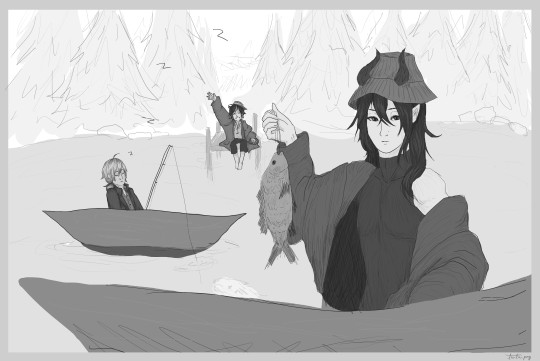
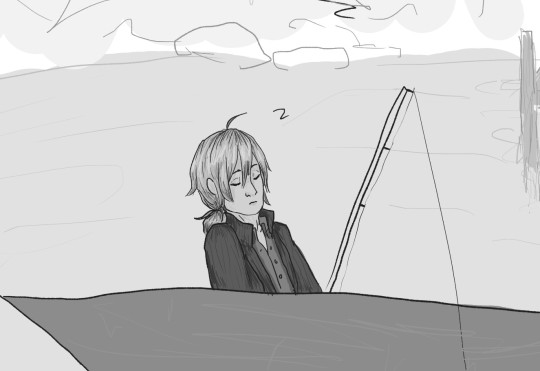


diasomnia fishing trip yippeeee (aka the most elaborate joke i've drawn so far)
#i imagine sebek's the one taking the picture#a friend wanted me to draw a eurasian carp while i was doodling blorbos#and it escalated into “you know how men on tinder hold fish in pfp's? you should draw malleus doing that” and i spent 2 hours doing just th#it was worth the brain damage of trying to learn values ngl#tarta.png#tartart#krita#disney twisted wonderland#disney twst#malleus draconia#silver vanrouge#lilia vanrouge#twst silver#twst malleus draconia#twst lilia vanrouge#twisted wonderland fanart#diasomnia
75 notes
·
View notes
Note
Favorite carp? Individual or species, I'm not picky.
My favorite carp would have to be the Common/Eurasian Carp, Cyprinus carpio!

13 notes
·
View notes
Text
Warrior Cats Prefixes List- G
I had a WC Name Generator on Perchance that I made but I don't seem to have access anymore, so I'm remaking it here as just a simple list. The definitions used are the ones that Clan cats have for those things, and thus are the origins of the names. Definitions used are whatever I found when I googled it.
Gale-: "[noun] a very strong wind"
Galerina-: "[noun] a species of extremely poisonous mushroom-forming fungus in the family Hymenogastraceae of the order Agaricales"
Gannet-: "[noun] a large seabird with mainly white plumage, known for catching fish by plunge-diving"
Garlic-: "[noun] a strong-smelling pungent-tasting bulb; [noun] the plant, closely related to the onion, that produces garlic bulbs"
Garnet-: "[noun] a precious stone consisting of a deep red vitreous silicate mineral"
Garter-: "[noun] a common, harmless North American snake that typically has well-defined longitudinal stripes and favors damp habitats"
Gem-: "[noun] a precious or semiprecious stone"
Gentle-: "[adj] having or showing a mild, kind, or tender temperament or character"
Gill-: "[noun] the paired respiratory organ of fish and some amphibians; [noun] the vertical plates arranged radially on the underside of mushrooms and many toadstools"
Ginger-: "[noun] a hot, fragrant spice; [noun] a Southeast Asian plant, which resembles bamboo in appearance, from which ginger is taken; [adj] of a light reddish-yellow or orange-brown color"
Glade-: "[noun] an open space in a forest"
Gleam-: "[noun] a faint or brief light, especially one reflected from something; [verb] shine brightly, especially with reflected light"
Gloom-: "[noun] partial or total darkness; [adj] have a dark or somber appearance"
Glow-: "[noun] a steady radiance of light or heat; [verb] give out steady light without flame"
Glowworm-: "[noun] a soft-bodied beetle with luminescent organs in the abdomen, especially the larva-like wingless female which emits light to attract the flying male"
Goat-: "[noun] a hardy domesticated ruminant animal that has backward curving horns and (in the male) a beard"
Gold-: "[noun] a deep lustrous yellow or yellow-brown color; [adj] made of or colored like gold"
Golden-: "[adj] colored or shining like gold"
Goldenrod-: "[noun] a plant of the daisy family, which bears tall spikes of small bright yellow flowers"
Goldfish-: "[noun] a small reddish-golden Eurasian carp"
Goose-: "[noun] a large waterbird with a long neck, short legs, webbed feet, and a short broad bill"
Gopher-: "[noun] a burrowing rodent with fur-lined pouches on the outside of the cheeks"
Gorge-: "[noun] a narrow valley between hills or mountains, typically with steep rocky walls and a stream running through it"
Gorse-: "[noun] a yellow-flowered shrub of the pea family, the leaves of which are modified to form spines, native to western Europe and North Africa"
Goshawk-: "[noun] a large, short-winged hawk resembling a large sparrow hawk"
Gosling-: "[noun] a young goose"
Grackle-: "[noun] a songbird of the American blackbird family, the male of which has shiny black plumage with a blue-green sheen; [noun] another term for an Asian mynah or starling, with mainly black plumage"
Grain-: "[noun] wheat or any other cultivated cereal crop used as food; [noun] a single fruit or seed of a cereal"
Granite-: "[noun] a very hard, granular, crystalline, igneous rock consisting mainly of quartz, mica, and feldspar"
Grape-: "[noun] a berry, typically green (classified as white), purple, red, or black, growing in clusters on a grapevine"
Grapevine-: "[noun] a vine native to both Eurasia and North America, especially one bearing fruit (grapes)"
Grass-: "[noun] vegetation consisting of typically short plants with long, narrow leaves; [noun] the mainly herbaceous plant that constitutes grass, which has jointed stems and spikes of small, wind-pollinated flowers"
Grasshopper-: "[noun] a plant-eating insect with long hind legs that are used for jumping and for producing a chirping sound. It frequents grassy places and low vegetation"
Gravel-: "[noun] a loose aggregation of small water-worn or pounded stones"
Gray-: "[noun] gray color or pigment; [adj] of a color intermediate between black and white, as of ashes or lead]"
Grayling-: "[noun] an edible freshwater fish of Eurasia and North America that is silvery-gray with horizontal violet stripes and has a long, high dorsal fin; [noun] a mainly brown European butterfly which has wings with bright eyespots and grayish undersides"
Grebe-: "[noun] a diving waterbird with a long neck, lobed toes, and almost no tail, typically having bright breeding plumage used in display"
Green-: "[noun] green color or pigment; [adj] of the color between blue and yellow in the spectrum; colored like grass or emeralds"
Grisette-: "[noun] a common edible woodland mushroom with a brown or gray cap, a slender stem, and white gills"
Grouse-: "[noun] a medium to large game bird with a plump body and feathered legs, the male being larger and more conspicuously colored than the female"
Grove-: "[noun] a small wood, orchard, or group of trees"
Growl-: "[verb] (of an animal, especially a dog) make a low guttural sound in the throat; [noun] a low guttural sound made in the throat by a hostile dog or other animal"
Grub-: "[noun] the larva of an insect, especially a beetle"
Gull-: "[noun] a long-winged web-footed seabird with a raucous call, typically having white plumage with a gray or black mantle"
Guppy-: "[noun] a small, livebearing freshwater fish"
Gust-: "[noun] a brief, strong rush of wind"
5 notes
·
View notes
Text
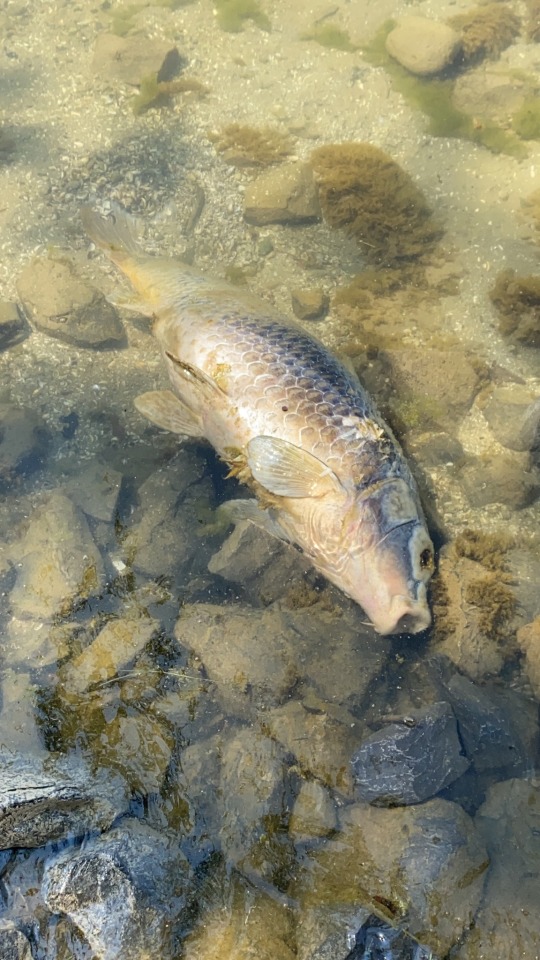
HOLY FUCKING SHIT YOU GUYS LOOK WHQT I FOUND ITS A EURASIAN CARP ITS LIKE THE SIZE OF MY TORSO I FUCKING WCREWMED WHEN I SAW THIS HOLY SHIT APPLES
11 notes
·
View notes
Text
Eurasian carp (Cyprinus carpio)
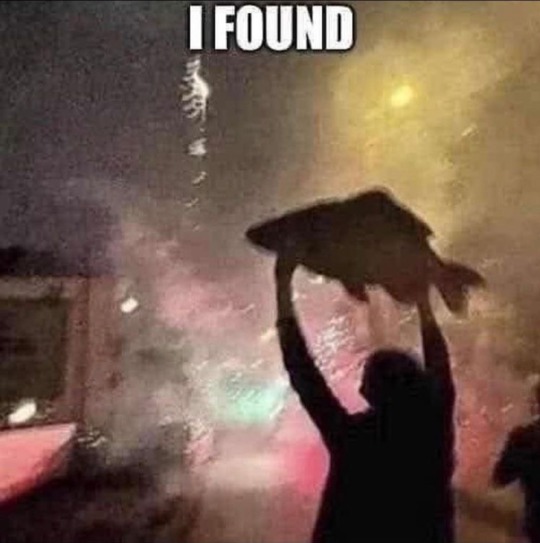
36K notes
·
View notes
Text
Managing Lake Weed Growth: Methods and Techniques for Effective Control
Lakes are not only picturesque landscapes that enhance the beauty of their surroundings but also vital ecosystems supporting diverse flora and fauna. However, when invasive weeds take over, they can disrupt the balance of these ecosystems, impacting water quality, recreational activities, and even property values. Lake weed control is essential to maintain the ecological integrity and usability of these water bodies. In this article, we explore the various methods and techniques available for effective lake weed management.
Understanding Lake Weeds
Before delving into control methods, it's crucial to understand the types of weeds commonly found in lakes. Aquatic plants, both native and invasive, can thrive in these environments. Common varieties include:
Submerged Weeds: These grow entirely underwater, such as hydrilla and Eurasian watermilfoil.
Floating Weeds: Also known as surface weeds, these float on the water's surface, like water hyacinth and duckweed.
Emergent Weeds: These plants grow partially submerged and partially above water, like cattails and bulrushes.
Methods of Control
Mechanical Control: This method involves physically removing weeds from the lake. Techniques include hand-pulling, raking, and the use of mechanical harvesters. While effective for small-scale weed removal, mechanical control may not be practical for large areas or dense weed populations.
Biological Control: Introducing natural predators or herbivores to feed on invasive weeds is a biological control method. For example, grass carp are often used to control excessive weed growth. However, careful consideration must be given to potential ecological impacts and regulatory restrictions.
Chemical Control: Herbicides are commonly used to manage weed growth in lakes. They can be applied directly to the water or injected into the plant itself. It's essential to use herbicides approved for aquatic use and follow application guidelines to minimize harm to non-target species and water quality.
Physical Barriers: Installing physical barriers, such as bottom barriers or floating mats, can prevent sunlight from reaching submerged weeds, inhibiting their growth. This method is particularly useful for localized control in swimming areas or around docks.
Nutrient Management: Excessive nutrients, particularly phosphorus and nitrogen, can fuel weed growth in lakes. Implementing strategies to reduce nutrient runoff from surrounding lands, such as vegetative buffers and stormwater management practices, can help prevent weed proliferation.
Integrated Weed Management
Effective lake weed control often involves a combination of these methods, known as integrated weed management (IWM). By combining mechanical, biological, chemical, and cultural control techniques, IWM aims to maximize effectiveness while minimizing environmental impact.
Best Practices for Lake Weed Control
Early Detection and Rapid Response: Regular monitoring of lake conditions allows for early detection of weed infestations, enabling prompt action to prevent their spread.
Selective Control: Whenever possible, opt for selective control methods that target invasive species while preserving native vegetation.
Consider Environmental Impacts: Prioritize methods that minimize harm to non-target species, water quality, and overall ecosystem health.
Community Engagement: Engage lake residents, recreational users, and local authorities in weed management efforts to foster a sense of stewardship and collective responsibility.
Conclusion
Maintaining a healthy balance of aquatic vegetation is essential for the overall health and usability of lakes. Effective lake weed control requires a multifaceted approach that considers the specific characteristics of the water body and surrounding ecosystem. By employing integrated weed management strategies and adhering to best practices, lake owners and managers can ensure the long-term sustainability and enjoyment of these valuable natural resources.
0 notes
Text
in case you where wondering what this weird fishenthusiast has been doing:
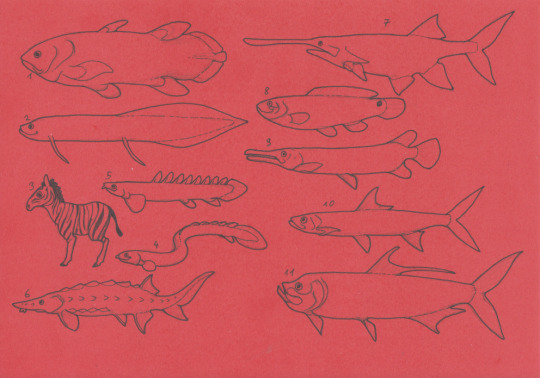
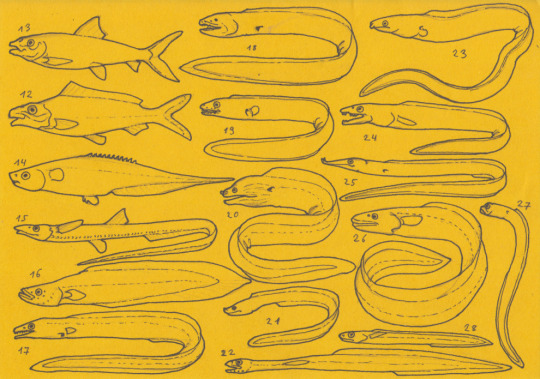


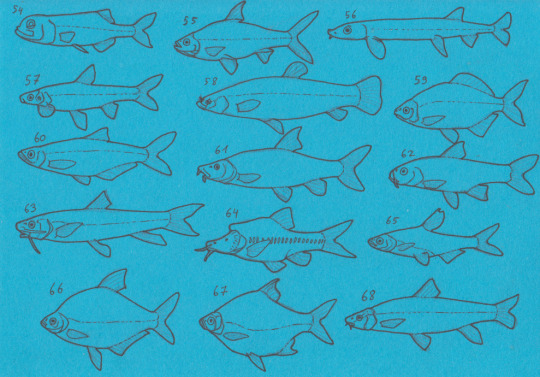
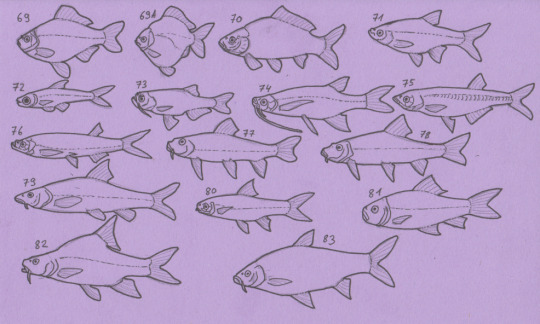
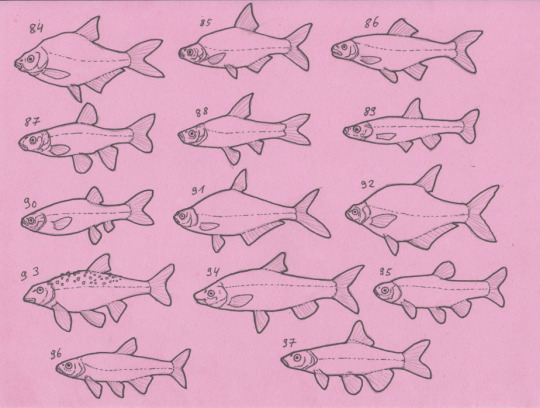
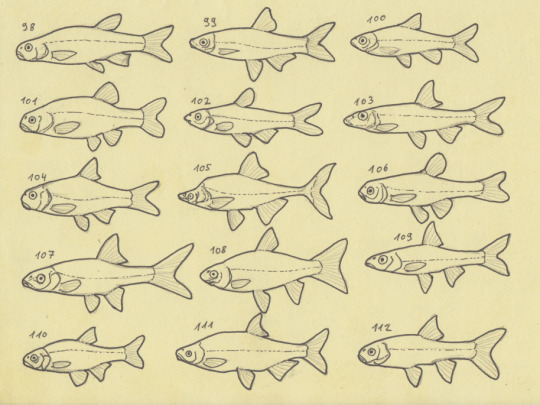
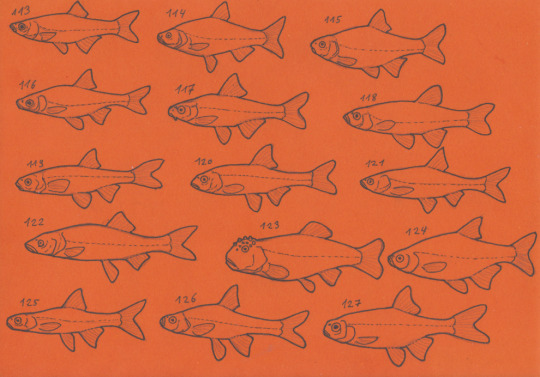
1 Coelacanth 2 Lungfish 3 Tetrapod 4 Ropefish 5 Bichir 6 Sturgeon 7 Paddlefish 8 Bowfish 9 Gar (messed up Maxillary needs correction) 10 Ladyfish 11 Tarpon 12 Japanese gissu 13 bonefish 14 deep sea spiny eel 15 Halosaur 16 Protanguilla 17 cutthroat eel 18 Mud eel 19 thin eel 20 moray eel 21 false moray (u r a FRAUD!) 22 longneck eel 23 snake eel 24 pike conger 25 duckbill eel 26 conger 27 garden eel 28 Bathymyrinae 29 spaghetti eel 30 pelican eel 31 Saccopharynx 32 onejaw gulpers 33 bobtail snipe-eel 34 freshwater eel 35 snipe eel 36 sawtooth eel 37 Mooneye 38 freshwater butterflyfish 39 arowana 40 knifefish 41 aba 42 freshwater elephantfish 43 anchovi 44 denticle herring 45 Pellona 46 Pristigaster 47 wolf herring 48 round herring 49 herring 50 sardine 51 sprat 52 menhaden 53 sprat 54 Slickhead 55 milkfish 56 beaked salmon 57 shellear 58 hingemouth 59 bitterling 60 bleak 61 barbel 62 redfin 63 snowtrout 64 Golden-Line fish 65 sharpbelly 66 white amur bream 67 tinfoil barb 68 khramulyas 69 crucian carp 69A ryukin goldfish 70 common carp 71 carplet 72 rasbora 73 danio 74 flying barb 75 silver cyprinid 76 razorbelly minnow 77 false gudgeons 78 gudgeon 79 steed 80 mud carp 81 labeo 82 yellowfish 83 Leptobarbus 84 common bream 85 bleak 86 chiselmouth 87 longfin dace 88 mexican chub 89 spanish minnowcarp 90 aztec chub 91 bream 92 silver bream 93 stoneroller 94 nase 95 dace 96 redside dace 97 ornate shiner 98 lake chub 99 satinfin shiner 100 desert minnow 101 desert dace 102 longjaw minnow 103 slender chub 104 cutlips minnow 105 western chub 106 flame chub 107 california (roll ) roach 108 silvery minnow 109 bigeye chub 110 least chub 111 hitch 112 spinedace 113 moderlieschen 114 eurasian dace 115 highscale shiner 116 finescale shiner 117 blacktail chub 118 pearl dace 119 spikedace 120 moapa dace 121 peamouth 122 hardhead 123 hornhead chub 124 golden shiner 125 eastern shiner 126 pugnose minnow 127 oregon chub And I am NOWHERE NEAR finished!
2K notes
·
View notes
Text
Animal Crossing Fish - Explained #191
Brought to you by a marine biologist with an exclusive...
CLICK HERE FOR THE AC FOSH EXPLAINED MASTERPOST!
I’ll level with ya - I almost didn’t do today’s fish because it’s extremely similar to other fish we have covered in this series. What I’m saying is that I’m getting really tired of talking about Cyprinidae fish, the family of fish that comprise the carps, the most numerous of fish families. But, no, I should cover every fish in the series - I mean, I’ve come this far! So today I will cover the Herabuna, which, actually was a bit more interesting than I expected. I’ll explain!

So, the herabuna is the only fish in AC that is exclusive to Japan. It was included in the very first installment of Animal Crossing in 2001 (called Doubutsu no Mori in Japan). When Animal Crossing went international, the herabuna was replaced with the brook trout. So, yeah, an exclusive fish, and and neither the herabuna or the brook trout have appeared in the mainline games since the Gamecube days. Anyway, it may not be *too* much of a loss, considering the herabuna’s sprite is basically just the crucian carp but, like, squished inward. There is a reason for that, though!
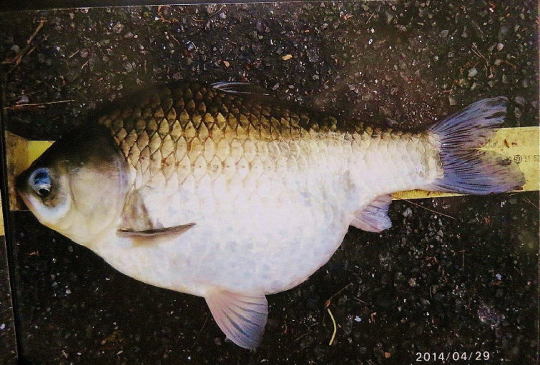
The herabuna (Carassius cuvieri), the wild version more commonly known as the Japanese White Crucian Carp, does indeed share the same Genus with all of the goldfish and the crucian carp in the AC games - Carassius. The genus is Eurasian in origin, in which the Japanese White Crucian Carp is endemic to Lake Biwa (that sound familiar) and the Yodo River system in Japan.
Now, I said the “wild version” because the fish called “herabuna” is a the domesticated, cultivated variant. It has a deeper body with a more arched back than its wild counterpart. It is bred to stock other water bodies around Japan for catch-and-release fishing and is raised in China for food. So, you see, just like its cousin the goldfish, it is another domesticated animal let loose in your town’s waterways. :)
And there you have it. Fascinating stuff, no?
#herabuna#carp#freshwater#fish#animal crossing#science in video games#animal crossing fish explained
5 notes
·
View notes
Note
may I have a fish 🐟 just so I can pose like a tinder frat boy and throw it back in the water

You get a Eurasian Carp
Cyprinus carpio
19 notes
·
View notes
Photo

Mountains of the rising sun This is pretty neat, this is a view of the highest peak in Japan from the second highest peak at sunrise. Mount Kitadake has a height of 3,193 meters, about 600 meters shorter than the lovely cone in the distance.
Although Japan is famous, even here, for its volcanoes, Kitadake is a mountain of a different sort. It sits within the Minami Alps national park, a long, thin national park in the highest part of the country. Unlike the famous peak in the distance, these mountains are made of sedimentary rocks. They are Paleozoic to Mesozoic in age and have been thrust upward to great heights by the ongoing subduction off the coast. The rocks formed originally off the coast of the Eurasian continent and they’ve been thrust upwards by the ongoing plate tectonic convergence. Instead of single cones, the Minami Alps form a thin chain of high ground; oriented, linear ridges of sediment that give rise to the rivers that flow to the coastline. The Minami Alps are one of Japan’s Geoparks, regions designated as having unique geological and geographic character worthy of preservation and further study. With this view I think we can all agree that designation is earned. -JBB Image credit: Sky Carp https://flic.kr/p/oyxyiM Read more: http://machiaruki.net/unique_nagano/detail.php?id=102 http://www.geo-itoigawa.com/eng/introduction/jgn.html
#japan#mountains#kitadake#minami alps#geology#Fuji#sunrise#geopark#travel#science#sedimentary#uplift#the earth story
109 notes
·
View notes
Text
IDV Merfolk AU
Emily-White and blue platinum angelfish-2’9”
Emma-Ghost Shark-5’5”
Freddy-Red Bellied Piranha-5’9”
Kreacher-Saddleback Loach-1’5”
Lucky Guy-Common Carp-5’7”
Martha-Common Octopus-5’3”
William-Orca-24’8”
Kurt-Blue Sea Dragon-1’6”
Naib-Clown Knifefish-5’4”
Servais-Sandbar Shark-11’8”
Murro-Killifish-1’4”
Mike-Mandarinfish-1’4”
Margaretha-Pink Mauve Jellyfish-5’3”
Kevin-Zebra Lionfish-2’11”
José-Red Octopus-5’7”
Demi-Cherry Salmon-5’5”
Vera-Coconut Octopus-2’8”
Helena-Devil’s Hole Pupfish-1’3”
Tracy-Eurasian Minnow-1’3”
Norton-Humpback Anglerfish-3’0”
Eli-Japanese Flying Squid-5’10”
Aesop-Glass Catfish-1’7”
Fiona-Purple Betta Fish-1’3”
Patricia-Vampire Squid-5’7”
Victor-Humboldt Squid-12’0”
Andrew-Albino Giant Squid-35’0”
Luca-Electric Eel-10’10”
Edgar-Shiho’s Seahorse-1’4”
Melly-Emerald Green Sea Slug-1’5”
Ganji-Damselfish-1’6”
Leo-Ghost Shark-6’7”
Joker-Maroon Clownfish-3’2”
Bane-Brown Rockfish-6’5”
Michiko-Goshiki Koi-6’1”
Violetta-California Two-Spot Octopus-6’2”
Joseph-Swordfish-10’10”
Mary-Lion’s Mane Jellyfish-18’0”
Burke-Thresher Shark-27’4”
Wu Chang-Zebra Moray-7’0”
Jack-Giant Moray-21’9”
Robbie-Kenyi Cichlid-2’2”
Luchino-Green Moray-19’2”
Ann-Black Ribbon Eel-7’5”
Antonio-Coconut Octopus-3’2”
Galatea-White Molly Fish-2’4”
4 notes
·
View notes
Note
here you go, ms. doubleca5t: the forbidden list of all tits
acacia tit, african blue tit, ashy tit, azure tit, black-bibbed tit, black-lored tit, carp's tit, caspian tit, chestnut-bellied tit, cinereous tit, cinnamon-breasted tit, coal tit, dusky tit, elegant tit, eurasian blue tit, european crested tit, fire-capped tit, grey tit, grey crested tit, great tit, green-backed tit, ground tit, iriomote tit, japanese tit, marsh tit, miombo tit, owston's tit, palawan tit, pere david's tit, red-throated tit, rufeous-bellied tit, rufeous-naped tit, rufeous-vented tit, sichuan tit, sombre tit, stripe-breasted tit, southern black tit, sultan tit, white-backed black tit, white-bellied tit, white-browed tit, white-fronted tit, white-naped tit, white-shouldered black tit, white-winged black tit, willow tit, yellow tit, yellow-bellied tit, yellow-browned tit, yellow-cheeked tit, varied tit
how much tit will you be showing once you get em. are we going to see just cleavage or full nip? i’m in the tits fandom and i’d like to prepare myself. i know the cleavage pics are a given but perhaps some side boob? what are you thinking? what shall you share?
Between all the outfits I'll be posting you'll see everything except the nips
761 notes
·
View notes